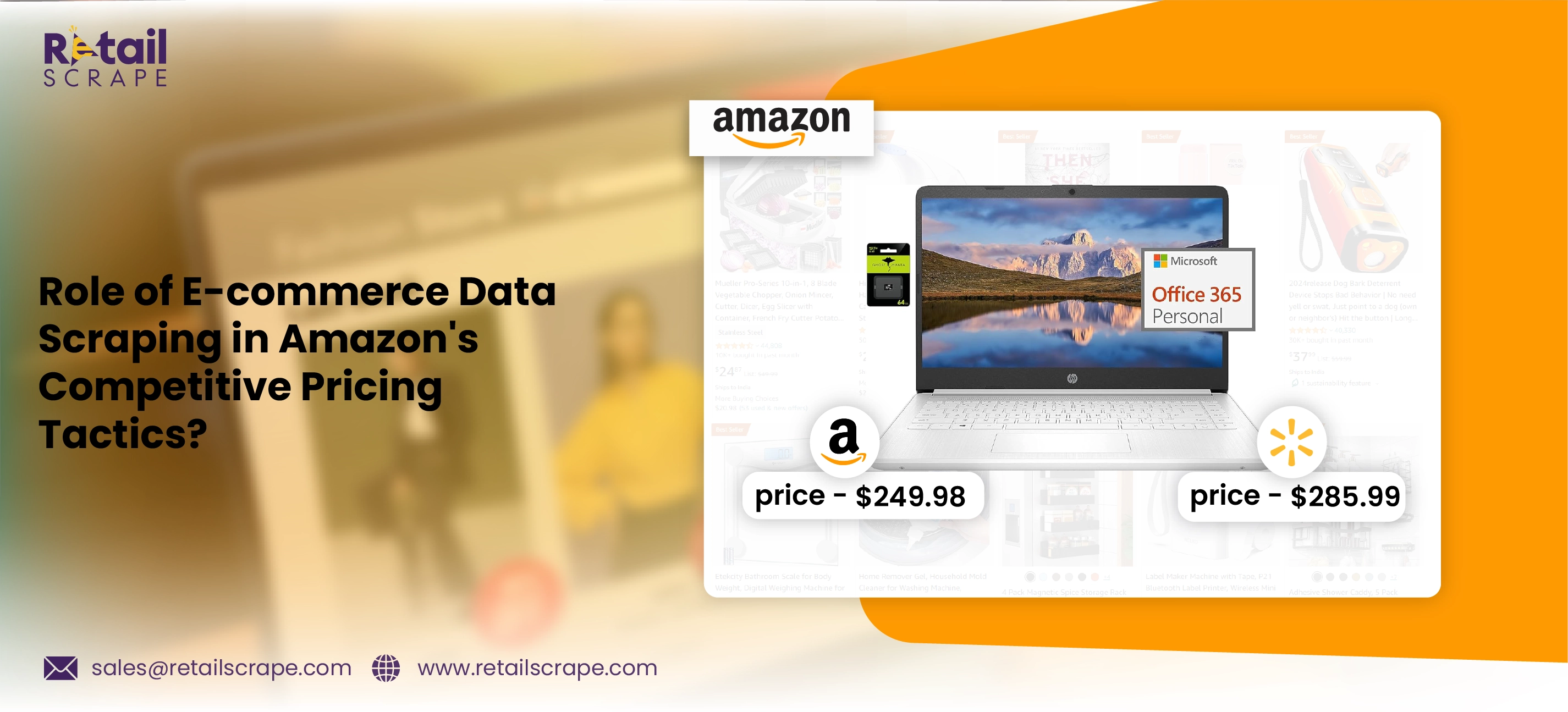
In 2023, Amazon continued to dominate the e-commerce landscape with its robust pricing strategy. Understanding Amazon's pricing approach is crucial for consumers and sellers who aim to navigate the competitive marketplace effectively. This article thoroughly explores Amazon's pricing strategy, highlighting key aspects such as dynamic pricing, competitive pricing, subscription services, promotional strategies, and technology and data analytics. Additionally, we delve into the importance of e-commerce data scraping to understand and analyze Amazon's pricing tactics.
1. Dynamic Pricing: The Heart of Amazon's Strategy
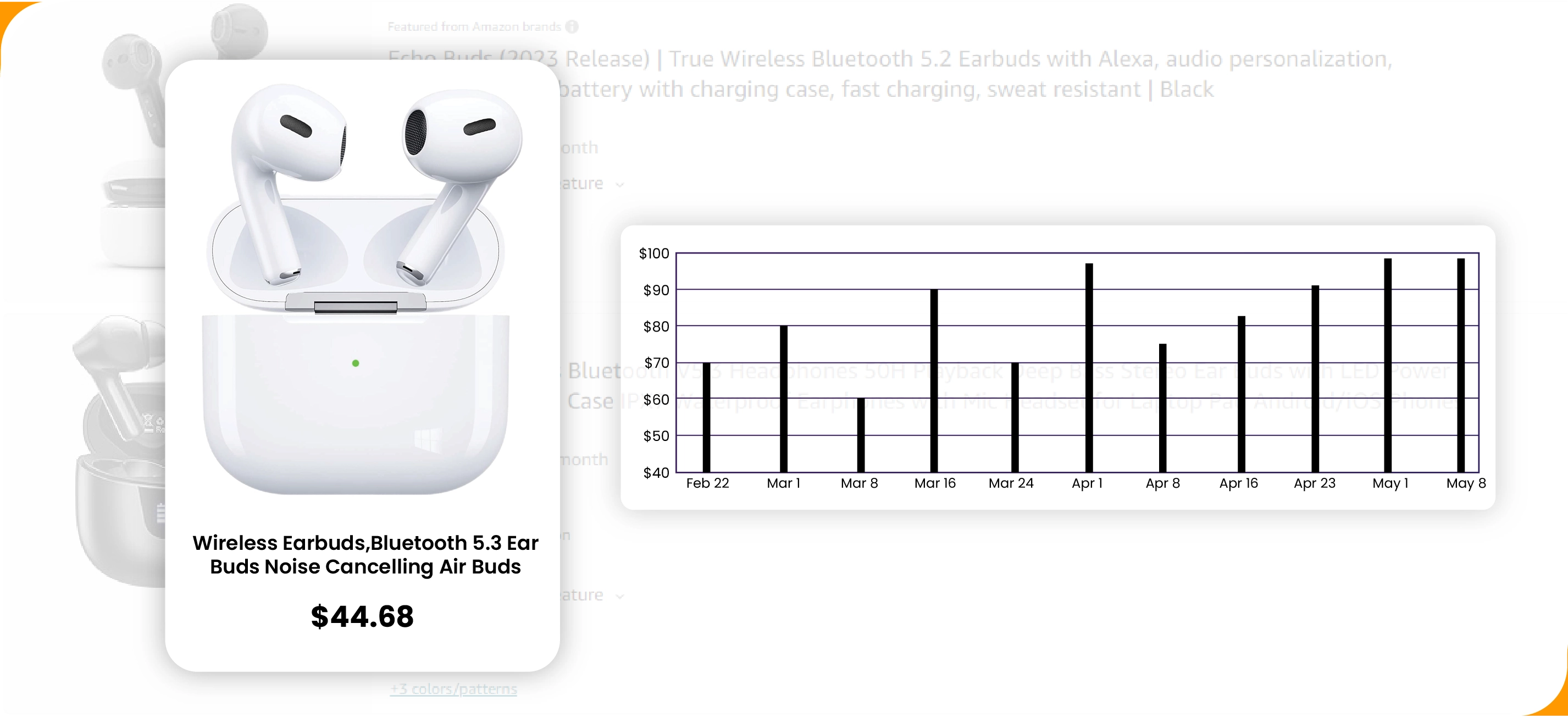
Amazon's dynamic pricing, or repricing, is a cornerstone of the company's pricing strategy. This approach involves real-time price adjustments based on demand, competition, and inventory levels. By leveraging sophisticated algorithms and machine learning, Amazon continuously monitors these variables and automatically updates prices. This ensures that prices remain competitive and aligned with market conditions.
Dynamic pricing strategies help Amazon maximize sales and manage inventory efficiently. Understanding Amazon's dynamic pricing mechanisms is crucial for sellers to maintain competitiveness. Utilizing tools for Amazon data scraping can provide valuable insights into these pricing changes, allowing sellers to adapt their strategies accordingly.
The ability to quickly respond to market fluctuations and competitor actions through dynamic pricing gives Amazon a significant edge in the e-commerce landscape, enhancing profitability and customer satisfaction.
Benefits of Dynamic Pricing:
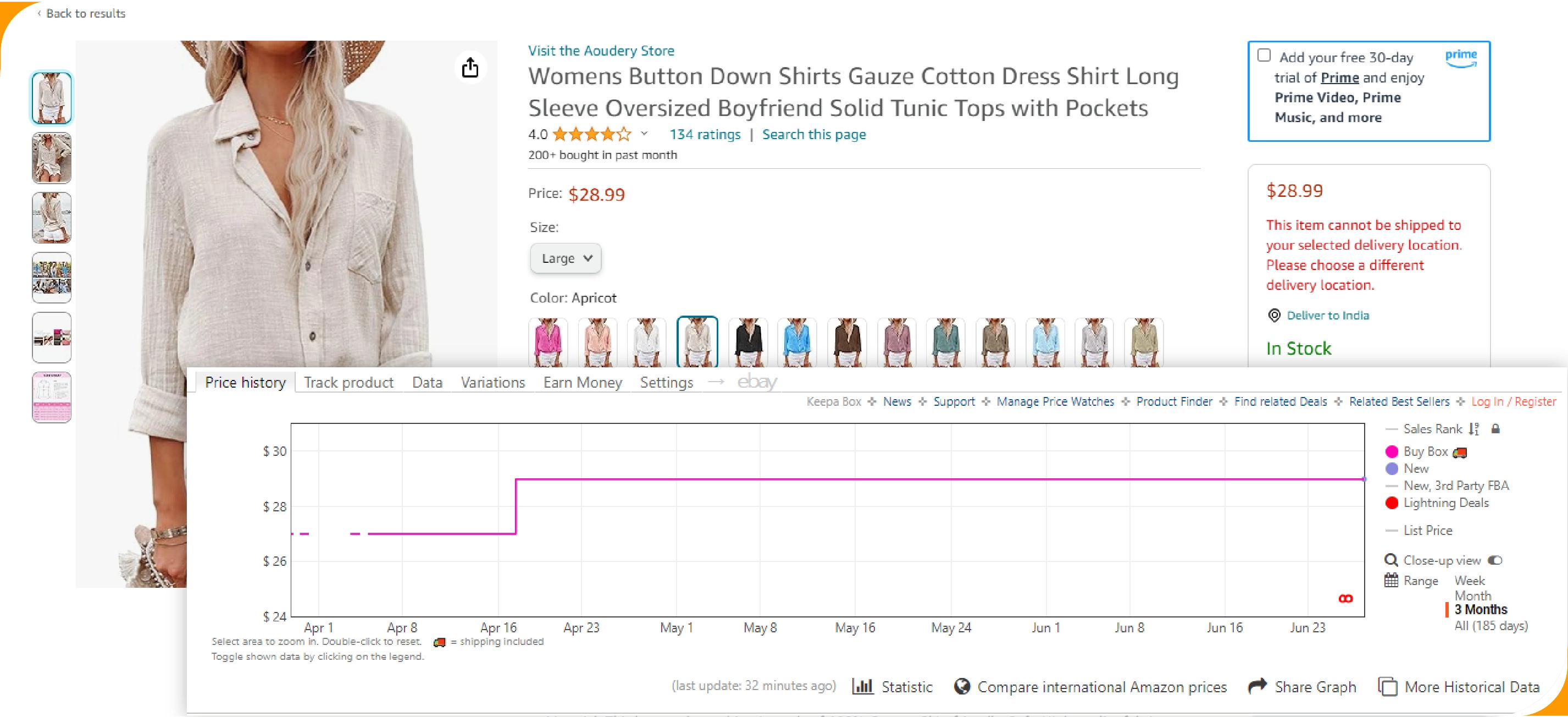
- Maximizes Sales: By adjusting prices to match demand, Amazon can maximize sales volume and revenue.
- Competitive Edge: Dynamic pricing strategies help Amazon stay competitive by ensuring its prices always align with or are better than its competitors.
- Inventory Management: It aids in managing inventory by promoting faster sales of overstocked items through price reductions, forming a vital part of the Amazon pricing model.
Challenges for Sellers:
Profit Margins: Frequent price changes can impact profit margins, making it essential for Amazon sellers to balance competitiveness with profitability.
Monitoring: Sellers must invest in repricing tools or services to keep up with Amazon seller pricing.
2. Competitive Pricing: Staying Ahead of the Game
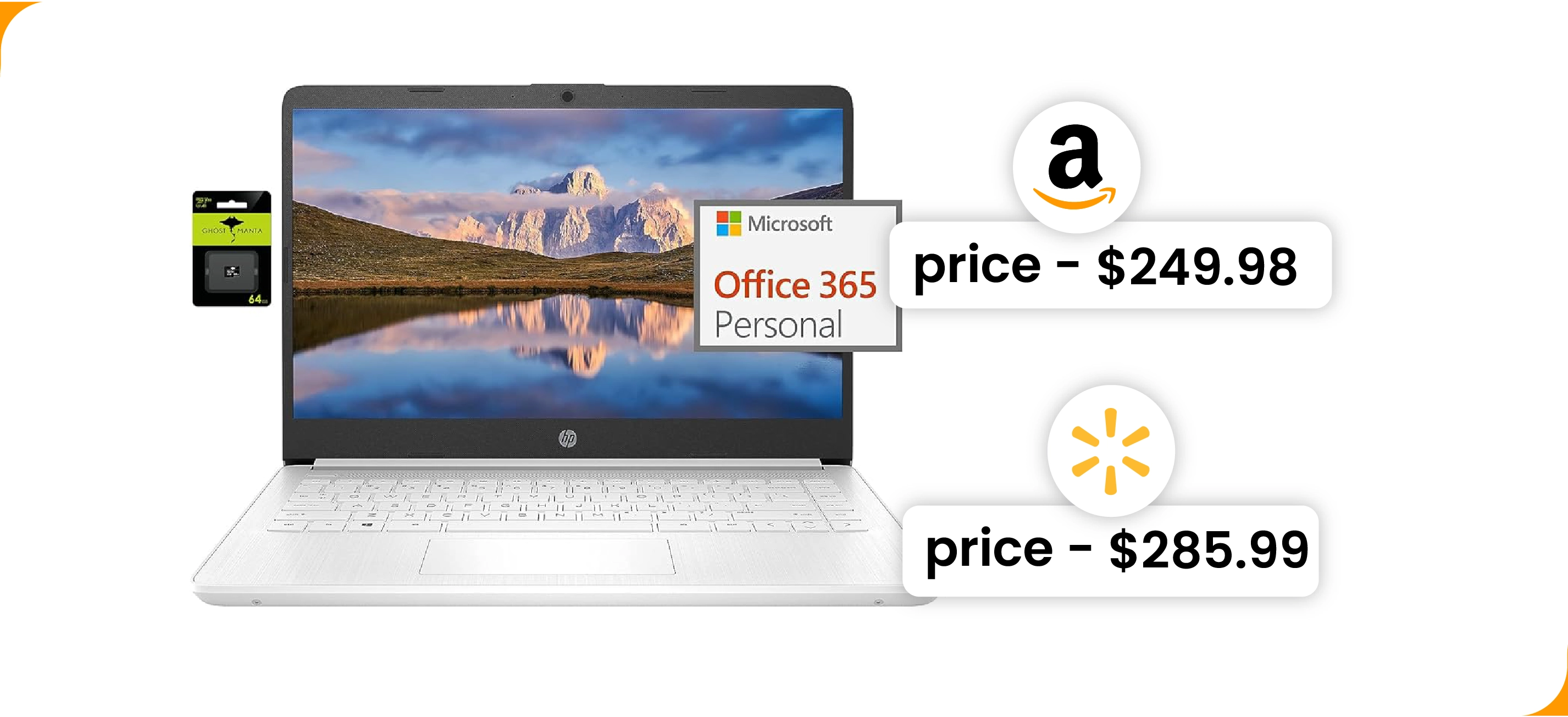
Amazon's competitive pricing strategy constantly benchmarks its prices against other major retailers. To achieve this, Amazon monitors competitor prices on various websites and adjusts prices accordingly. This continuous price comparison ensures that Amazon remains competitive, attracting price-sensitive customers and maintaining its position as a leading e-commerce platform.
Utilizing advanced technologies and e-commerce data scraping services, Amazon efficiently gathers and analyzes pricing information from competitors. This data-driven approach enables the company to make informed pricing decisions quickly. Amazon can enhance customer satisfaction and loyalty by aligning its prices with or beating its rivals.
Moreover, this strategy helps Amazon attract a more extensive customer base, ultimately driving sales and revenue growth. For sellers on the platform, staying competitive requires adapting to these dynamic pricing changes, often necessitating repricing tools and services.
Key Elements:
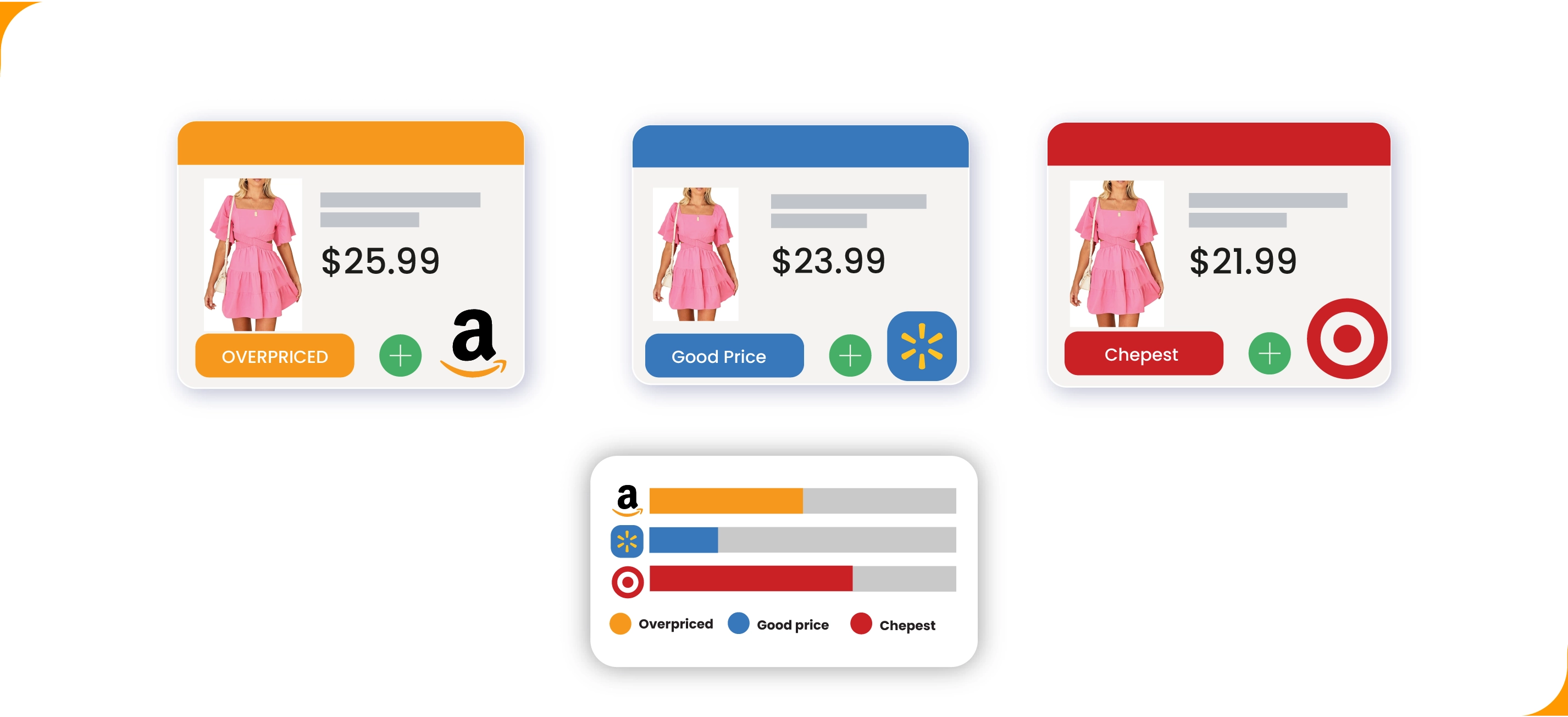
Price Matching: Amazon often matches or undercuts competitors' prices to attract price-sensitive customers.
Loss Leaders: Some products are sold at or below cost to attract customers, expecting they will purchase other, more profitable items.
Impact on Sellers:
Pressure to Compete: Sellers must be vigilant about competitor prices and be prepared to adjust their prices frequently to remain competitive.
Automated Tools: Many sellers use automated repricing tools to help manage this aspect of their business.
3. Subscription Services: Prime and Beyond
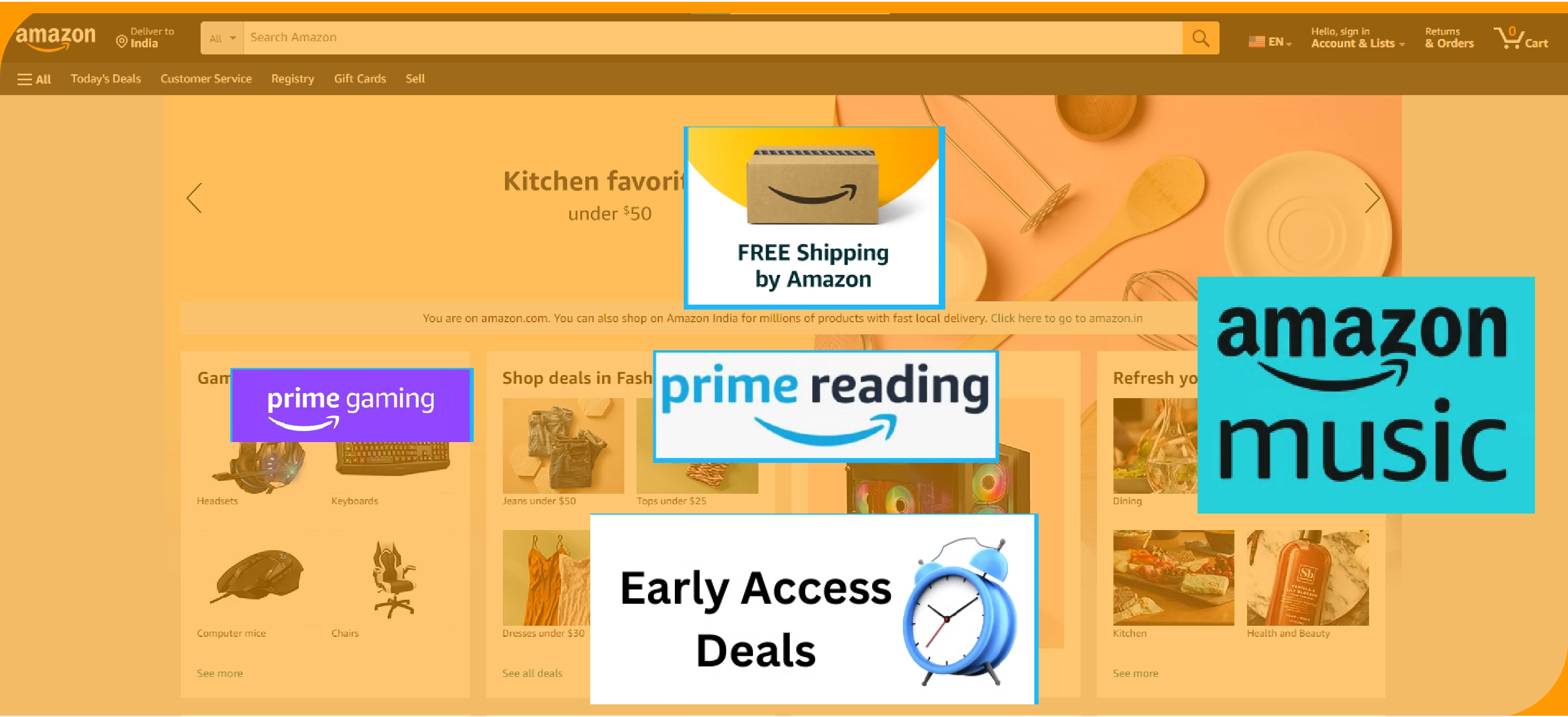
Amazon Prime is a pivotal component of Amazon's pricing strategy. The subscription service offers various benefits, including free shipping, access to streaming services, and exclusive deals for an annual or monthly fee.
Benefits of Amazon Prime:
- Customer Loyalty: Prime members tend to spend more and shop more frequently on Amazon, increasing overall revenue.
- Exclusive Discounts: Prime Day and other exclusive events drive significant sales and attract new subscribers.
Amazon Subscribe & Save:
Discounts for Subscriptions: Customers receive discounts on regular purchases of household items when they subscribe for regular deliveries.
Predictable Revenue: This program provides Amazon with predictable revenue streams and helps manage inventory more effectively.
4. Promotional Strategies: Driving Sales and Engagement

Amazon employs various promotional strategies to drive sales and customer engagement. These include Lightning Deals, which create urgency with time-limited offers, and digital coupons and discounts at checkout. Seasonal sales events like Black Friday, Cyber Monday, and Prime Day also boost sales significantly.
By leveraging an e-commerce data scraper, Amazon can analyze customer behavior and preferences to optimize these promotions. This data-driven approach ensures that suitable offers reach the right customers, enhancing effectiveness. Sellers benefit from increased product visibility and sales, though they must carefully manage the costs of participating in these promotions.
- Lightning Deals: Time-limited offers that create urgency and drive quick sales.
- Coupons and Discounts: Digital coupons and discounts can be applied at checkout.
- Seasonal Sales: Major sales events like Black Friday, Cyber Monday, and Prime Day.
Impact on Sellers:
Increased Visibility: Participation in these promotions can significantly increase a product's visibility and sales.
Cost Considerations: Sellers must carefully consider the cost of participating in these promotions and their potential impact on margins.
5. Technology and Data Analytics: The Backbone of Pricing Strategy

Amazon leverages advanced technology and data analytics to inform its pricing strategy. The company collects vast amounts of data on customer behavior, market trends, and competitor pricing.
Key Technologies:
Machine Learning: Algorithms predict customer demand and optimal pricing strategies.
Big Data Analytics: Analyzes large datasets to identify trends and patterns that inform pricing decisions.
Artificial Intelligence: Automates pricing adjustments and personalized recommendations.
Advantages:
Personalization: Offers personalized pricing and recommendations to enhance the customer experience.
Efficiency: Automates complex pricing decisions, reducing the need for manual intervention.
6. Psychological Pricing: Subtle but Effective

Amazon also employs psychological pricing strategies to influence purchasing behavior. This includes:
Charm Pricing: Prices ending in .99 or .95 to create the perception of a deal (e.g., $19.99 instead of $20).
Bundling: Offering products in bundles at a lower price than if purchased individually.
Decoy Pricing: Introducing a higher-priced option to make other products appear more affordable.
7. Global Pricing Strategy: Adapting to Different Markets
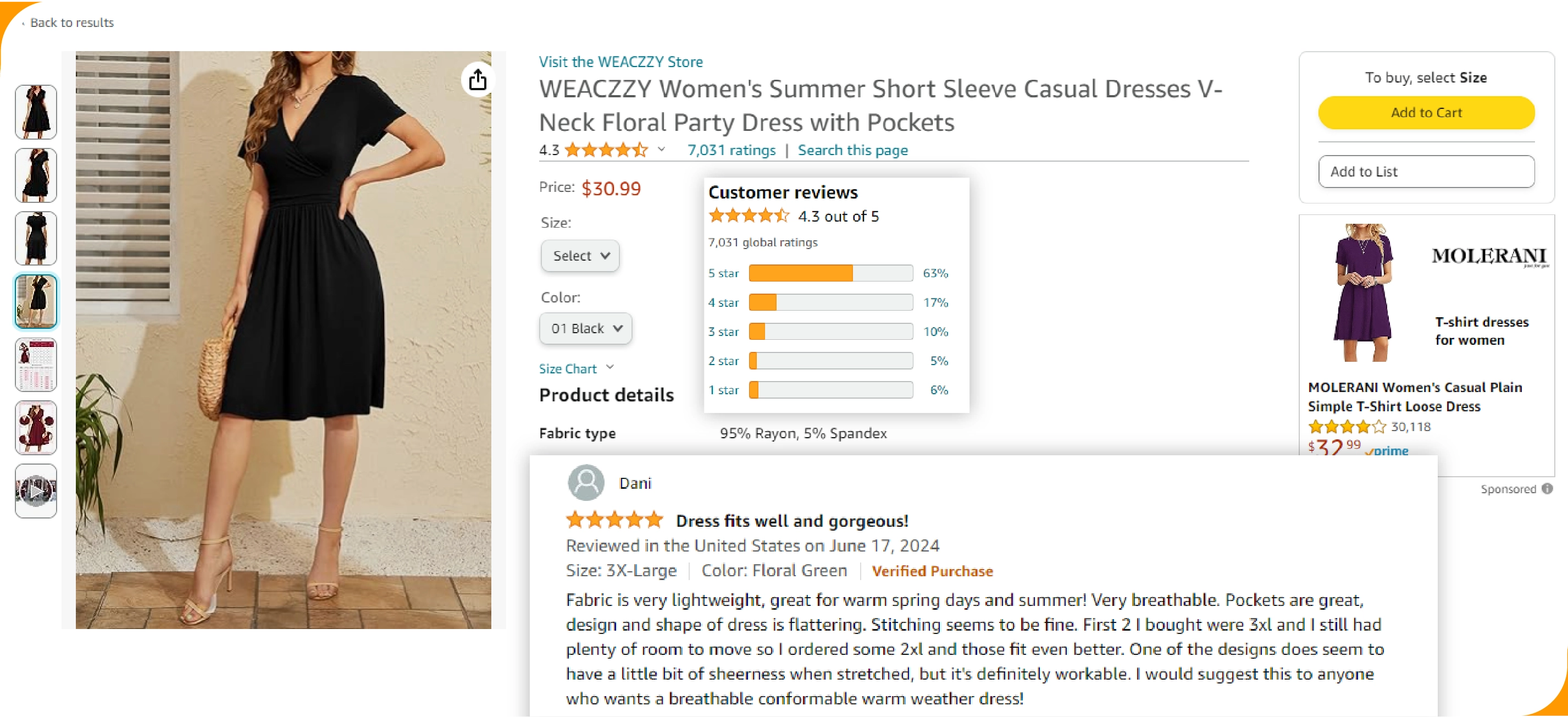
Amazon's pricing strategy varies by region to account for different market dynamics and consumer behavior. This includes:
- Localized Pricing: Adjusting prices based on local market conditions, including competition, purchasing power, and currency fluctuations.
- Currency Conversion: Providing accurate currency conversions for international buyers to streamline purchasing.
Challenges:
Regulatory Compliance: Ensuring pricing practices comply with local laws and regulations.
Market Research: Continuous research is conducted to understand local consumer preferences and behavior.
8. The Role of Sellers: Collaboration and Competition

Third-party sellers play a crucial role in Amazon's marketplace, contributing to significant sales. However, they must navigate Amazon's competitive pricing landscape.
Strategies for Sellers:
- Competitive Pricing: Using repricing tools to remain competitive.
- Exclusive Products: Offering unique or private-label products is less likely to be subject to intense price competition.
- Customer Service: Differentiating through excellent customer service and building strong customer relationships.
Benefits:
Increased Reach: Access to Amazon's vast customer base.
Fulfillment Services: Utilizing Fulfillment by Amazon (FBA) to streamline logistics and delivery.
9. Ethical Considerations and Consumer Trust

Amazon's aggressive pricing strategies have faced scrutiny regarding their impact on smaller businesses and market competition.
Concerns:
- Market Dominance: Amazon's pricing power can squeeze smaller competitors and influence market dynamics.
- Fair Pricing: Ensuring pricing practices are fair and transparent to maintain consumer trust.
Amazon's Response:
- Compliance: Adhering to regulatory requirements and ethical standards.
- Support for Small Businesses: Initiatives to support small and medium-sized enterprises (SMEs) on the platform.
10. Future Trends in Amazon's Pricing Strategy

Looking ahead, several trends are likely to shape Amazon's pricing strategy:
- Increased Use of AI: Continued AI and machine learning advancement to refine dynamic pricing models.
- Sustainability: Incorporating sustainability metrics into pricing strategies, such as promoting eco-friendly products.
- Enhanced Personalization: Further personalization of pricing and recommendations based on individual customer data.
Conclusion: Amazon's pricing strategy in 2023 is multifaceted, and leverages advanced technology, competitive insights, and consumer psychology to maintain its market dominance. For sellers, understanding and adapting to Amazon's pricing mechanisms is crucial for success on the platform. As Amazon continues to innovate and refine its pricing strategies, staying informed and agile will be essential for anyone involved in the e-commerce ecosystem. By balancing competitiveness with profitability and focusing on customer satisfaction, Amazon and its sellers can thrive in this dynamic marketplace.
Transform your retail operations with Retail Scrape Company's data-driven solutions. Harness real-time data scraping to understand consumer behavior, fine-tune pricing strategies, and outpace competitors. Our services offer comprehensive pricing optimization and strategic decision support. Elevate your business today and unlock maximum profitability. Reach out to us now to revolutionize your retail operations!
